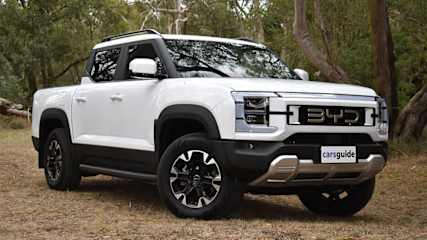Is brand loyalty a thing of the past in the Australian new vehicle market? Why the new wave of challenger brands like MG, BYD and GWM will detach an increasing number of buyers from their long-term favourites | Opinion
By James Cleary · 27 Apr 2025
In 2025 branding means way more than a hot iron mark scorched into a steer’s backside.It’s about a brand’s personality, reputation and your interactions with it. What it says about you. What it delivers. How it makes you feel. A visual identity, a design style… and a million other things. And there are automotive brands in the Australian new-car market that have strategically built solid brand equity over many decades.Current market leader, Toyota began dipping its corporate toe into global export waters by shipping cars here in the late 1950s. And other Japanese makers like Honda, Mazda and Nissan followed it in conquering initial hesitancy by steadily investing in strong retail networks, pushing product improvement and focusing on a positive customer experience.Ford has built its global brand around everything from the Model T and its revolutionary assembly line to pumped up muscle cars and victory at Le Mans. While here it embedded itself in the local landscape via a manufacturing presence spanning close to a century and regular victory at Mount Panorama.And more recently, relative newcomers like Hyundai and Kia have moved rapidly from cheap and (mostly) cheerful to innovators that repositioned the concept of value and quality in the local market.All of which led to large pockets of ‘rusted on’ brand loyalty. The concept of ‘Ford and Holden families’ started to diminish from the moment the latter departed the scene in 2020 (if not before), but Toyota’s reputation for value, durability and affordable ownership has seen it maintain a legion of never-say-die fans.Same for Ford, Mazda, Mitsubishi and others. But I'd argue a turning point was when, after an initial false start through a private importer in 2013, MG set up as a direct subsidiary in 2017.Great Wall had landed as the first Chinese car brand in the Aussie market in 2009, but MG 2.0 was different. Even if its ‘Since 1924’ positioning stretched credulity, its products were better than expected and pricing was ultra sharp.Sharp enough to encourage budget-focused new-car buyers, even used-car prospects, to give the brand a go.With the introduction of new-generation products in the early 2020s sales took off like a rocket, and it’s here that my ‘That’s a good idea’ theory kicks in.I reckon executives at rival Chinese car brands, keeping an eye on MG’s increasing success Down Under, all had the same ‘good idea’ at the same time. Namely, let’s get into Australia and grab a piece of that action. Hence the subsequent arrival of Chery in 2023, itself a factory-backed restart after an initial import-distribution arrangement broke down back in 2011. Followed by the flood gates opening, with BYD, Deepal, Geely, a ramped up GWM, JAC, LDV, Leapmotor, Smart, Jaecoo, XPeng and Zeekr all jumping in with Aion, Avatar, Jetour, Lynk & Co, Skyworth and others waiting in the wings.Doesn’t matter which category you’re talking about - white goods, sporting equipment, hi-fi - if one fresh competitor enters a mature market, it’s likely to be met with reluctance, even contempt by existing brand loyalists.But if near enough to 20 newcomers blaze into market at the same time, clearly something seismic is going on and it feels like you’d be missing a trick if you didn’t at least investigate the rapidly changing competitive landscape.Give them the benefit of 20/20 hindsight as well as a time machine and it’s not certain all the new brands above would currently be making an Aussie entrance.But multiple triggers have been pulled with retail network deals done, head office staff recruited, parts warehousing set up, service and sales training completed and marketing campaigns launched. So, in a mature market, early movers like MG, Chery and GWM have the advantage and more recent arrivals will need to find a way to win over buyers… fast. And it’s a fair bet the ever-impactful lever marked price will be pulled on a regular basis.Some of the newcomers as well as more than a few existing legacy brands will be forced into a price war. Like it or not, loyalty comes under pressure when the incentive is enticing enough and with a cut-price cage fight likely to take place sooner rather than later not everyone will leave the octagon alive.Stand by for new-car buyers tempted en masse into ‘unbeatable deals’ that mean brand loyalties will be stretched beyond breaking point. The shake out from this looming war of attrition will be huge.







.jpg)

